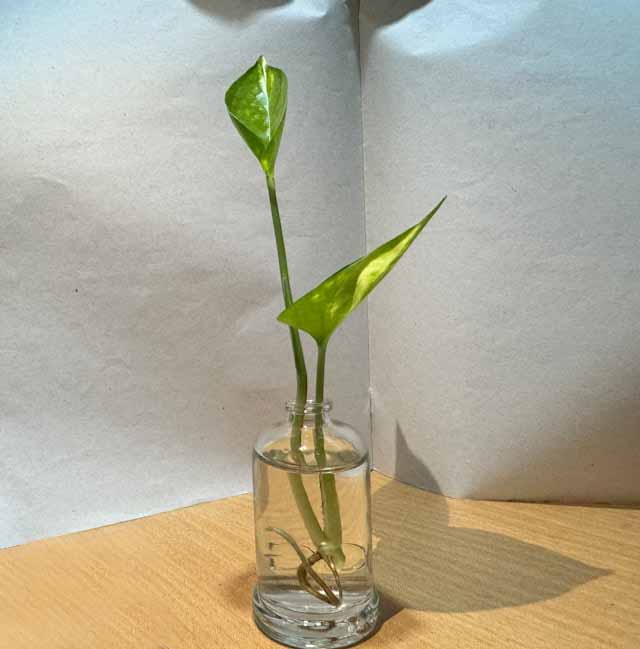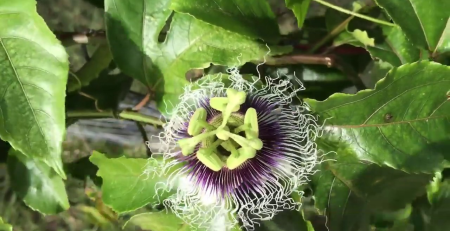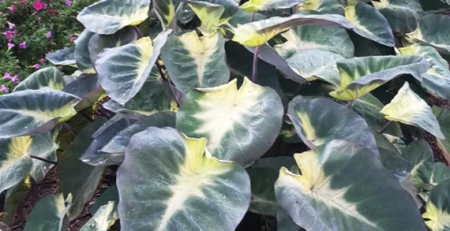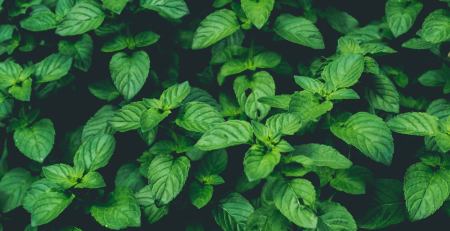How to Shine Plant Leaves Naturally: Quick Eco-Friendly Tips
Introduction
Creating a vibrant and healthy appearance for your indoor plants is essential not only for their well-being but also for the aesthetic appeal of your space. Knowing how to shine plant leaves naturally is key to achieving this. Shiny, clean leaves indicate a thriving plant that’s well-cared for. While there are numerous commercial products available for shining plant leaves, natural methods are often preferred for their safety and environmental benefits.
This article will explore various natural methods to shine plant leaves, ensuring that your plants stay healthy and radiant.
Understanding the Importance of Clean Plant Leaves
Before diving into the methods, it’s important to understand why clean and shiny leaves are beneficial for your plants. Plants rely on their leaves to photosynthesize, a process that converts light into energy. Dust, dirt, and grime can block light from reaching the leaves, reducing the plant’s ability to photosynthesize effectively. Over time, this can lead to weakened plants with poor growth.
Clean leaves also help plants exchange gases with their environment, a process known as transpiration. This is crucial for the plant’s overall health, as it helps regulate temperature and allows for the uptake of carbon dioxide, which is necessary for photosynthesis.
Shiny leaves also enhance the beauty of the plant, making it more appealing and vibrant. This is particularly important for ornamental plants, where appearance is a key aspect of their value.
Natural Methods to Shine Plant Leaves
1. Water and Microfiber Cloth
The simplest and most effective way to clean and shine plant leaves is by using water and a soft microfiber cloth. This method is suitable for most indoor plants.
Steps:
- Fill a spray bottle with lukewarm water.
- Lightly mist the plant’s leaves, ensuring they are damp but not soaked.
- Gently wipe each leaf with a clean microfiber cloth, following the natural direction of the leaf.
- For larger plants or those with many leaves, it might be easier to do this in sections.
Benefits:
- Water is a natural and non-toxic cleaning agent.
- Microfiber cloths are gentle on leaves and help remove dust and dirt effectively.
- This method is safe for all types of plants.
Tips:
- Avoid using cold water as it can shock the plant.
- Make sure the cloth is clean to prevent spreading any potential contaminants.
2. Banana Peels
Banana peels are a popular natural method for shining plant leaves. The inside of a banana peel contains natural oils and nutrients that can help clean and shine leaves.
Steps:
- Take a fresh banana peel and rub the inside (the white part) over the leaves.
- Gently wipe the leaf after applying the peel to ensure no residue is left behind.
- Repeat this process for all leaves on the plant.
Benefits:
- Banana peels are rich in potassium and other nutrients that can benefit the plant.
- The natural oils in the peel help give the leaves a glossy finish.
- This method is both cost-effective and environmentally friendly.
Tips:
- Use fresh banana peels for the best results.
- Avoid using this method on plants with fuzzy leaves, as the residue may be difficult to remove.
3. Milk and Water Solution
A diluted milk and water solution is another excellent natural option for cleaning and shining plant leaves. The proteins and fats in milk can give leaves a glossy appearance while also helping to remove dirt.
Steps:
- Mix one part milk with one part water in a spray bottle.
- Lightly mist the leaves with the solution.
- Wipe each leaf with a soft cloth or sponge to remove any excess liquid.
- Allow the leaves to air dry.
Benefits:
- Milk contains beneficial proteins that can enhance leaf health.
- This method helps remove dust and adds a subtle shine to the leaves.
- It can also act as a mild fungicide, helping to prevent certain plant diseases.
Tips:
- Use skim or low-fat milk to avoid leaving a greasy residue.
- Make sure to wipe off the solution thoroughly to prevent any unpleasant odors.
4. Coconut Oil
Coconut oil is a natural product that can be used sparingly to shine plant leaves. It adds a deep shine and can also help repel dust.
Steps:
- Apply a small amount of coconut oil to a soft cloth.
- Gently rub the cloth over the leaves, making sure to cover the entire surface.
- Use a clean part of the cloth to buff the leaves, removing any excess oil.
Benefits:
- Coconut oil is a natural product that adds a rich shine to leaves.
- It helps protect leaves from dust accumulation.
- This method is long-lasting, requiring less frequent applications.
Tips:
- Use coconut oil sparingly, as too much can clog the pores of the leaves.
- Avoid using this method on plants with thin or delicate leaves.
5. Neem Oil
Neem oil is a natural pesticide and fungicide that can also be used to shine plant leaves. It’s particularly useful for plants that are prone to pests, as it helps keep insects at bay while improving the appearance of the leaves.
Steps:
- Dilute neem oil with water according to the instructions on the product label.
- Apply the solution to the leaves using a spray bottle.
- Wipe the leaves with a soft cloth to remove any excess oil.
Benefits:
- Neem oil provides a natural shine to the leaves.
- It helps prevent and treat pest infestations.
- This method also has antifungal properties, helping to keep the plant healthy.
Tips:
- Make sure to dilute neem oil properly, as it can be potent.
- Test on a small area of the plant first to ensure it doesn’t cause any adverse reactions.
6. Aloe Vera Gel
Aloe vera is not only beneficial for skin but also for plant leaves. It can be used to clean and shine the leaves while providing them with natural nutrients.
Steps:
- Extract fresh aloe vera gel from a leaf.
- Dilute the gel with a small amount of water.
- Apply the solution to the leaves using a soft cloth or sponge.
- Wipe the leaves clean to remove any excess gel.
Benefits:
- Aloe vera gel is rich in vitamins and nutrients that benefit the plant.
- It adds a natural shine to the leaves without clogging their pores.
- This method also helps soothe any damage to the leaves.
Tips:
- Use fresh aloe vera gel for the best results.
- Avoid applying too much gel, as it can leave a sticky residue.
7. Soap and Water Solution
A mild soap and water solution is a classic method for cleaning plant leaves. It helps remove dirt, dust, and pests, leaving the leaves clean and shiny.
Steps:
- Mix a few drops of mild liquid soap (preferably organic) with water in a spray bottle.
- Lightly mist the leaves with the solution.
- Wipe each leaf with a soft cloth or sponge.
- Rinse the leaves with clean water to remove any soap residue.
Benefits:
- Soap helps break down dirt and grime, making it easier to clean the leaves.
- This method is effective in removing pests like aphids and spider mites.
- It adds a subtle shine to the leaves while keeping them clean.
Tips:
- Use a mild soap to avoid damaging the leaves.
- Rinse the leaves thoroughly to prevent any soap build-up.
8. Vinegar and Water Solution
Vinegar is a natural cleaning agent that can be used to shine plant leaves. It’s especially effective for removing hard water spots and mineral deposits.
Steps:
- Mix one part white vinegar with three parts water in a spray bottle.
- Lightly mist the leaves with the solution.
- Wipe each leaf with a soft cloth to remove any spots or deposits.
- Rinse the leaves with clean water to remove any vinegar residue.
Benefits:
- Vinegar is a natural and non-toxic cleaning agent.
- It helps remove mineral deposits that can dull the leaves’ appearance.
- This method also acts as a mild disinfectant, helping to keep the plant healthy.
Tips:
- Use diluted vinegar to avoid damaging the leaves.
- Test on a small area of the plant first to ensure it doesn’t cause any adverse reactions.
9. Olive Oil and Lemon Juice
A mixture of olive oil and lemon juice can be used to create a natural leaf shine that also conditions the leaves.
Steps:
- Mix one tablespoon of olive oil with one tablespoon of lemon juice.
- Apply the mixture to a soft cloth.
- Gently wipe the leaves, covering the entire surface.
- Buff the leaves with a clean part of the cloth to remove any excess oil.
Benefits:
- Olive oil provides a deep, natural shine to the leaves.
- Lemon juice helps clean the leaves and adds a fresh scent.
- This method also conditions the leaves, keeping them soft and pliable.
Tips:
- Use this method sparingly, as too much oil can clog the pores of the leaves.
- Avoid using on plants with delicate leaves, as the lemon juice can be too acidic.
10. Egg White
Egg whites are another natural way to shine plant leaves. The proteins in egg whites help clean and polish the leaves, leaving them shiny and healthy.
Steps:
- Whisk an egg white until it becomes slightly frothy.
- Apply the egg white to the leaves using a soft cloth or sponge.
- Gently wipe the leaves, covering the entire surface.
- Buff the leaves with a clean part of the cloth to remove any excess egg white.
Benefits:
- Egg whites provide a natural shine to the leaves.
- They help clean the leaves and remove dust and dirt.
- This method is safe for most types of plants.
Tips:
- Use fresh egg whites for the best results.
- Avoid using on plants with fuzzy leaves, as the egg white may be difficult to remove.
Additional Tips for Maintaining Shiny Plant Leaves
- Regular Dusting: Regularly dust your plant’s leaves with a soft cloth or duster to prevent the build-up of dirt and grime. This makes the cleaning process easier and keeps your plants shiny.
- Proper Lighting: Ensure your plants receive the right amount of light. Insufficient light can cause leaves to become dull and lifeless, while too much direct sunlight can scorch the leaves, leading to damage.
- Avoid Over-Watering: Over-watering can cause water spots and mineral deposits on the leaves, which can dull their appearance. Water your plants properly and wipe off any excess water from the leaves.
- Use Clean Tools: Always use clean cloths, sponges, and other tools when cleaning your plant’s leaves. This prevents the spread of dust and contaminants.
- Be Gentle: When cleaning and shining plant leaves, be gentle to avoid damaging them. Some plants have delicate leaves that can be easily bruised or torn.
- Rotate Plants: If possible, rotate your plants regularly to ensure even exposure to light. This helps all the leaves stay healthy and shiny.
- Keep Humidity in Check: Some plants thrive in high humidity, which can help keep their leaves shiny and healthy. If your indoor environment is dry, consider using a humidifier or placing a tray of water near your plants to increase humidity.
Conclusion
Shining plant leaves naturally is not only beneficial for the appearance of your plants but also for their overall health. By using the natural methods outlined in this article, you can ensure that your plants remain vibrant, healthy, and attractive. Whether you choose to use simple water and a cloth or more specialized methods like banana peels or neem oil, these techniques are safe, effective, and environmentally friendly. Regular maintenance and proper care will keep your plants looking their best, adding beauty and life to your home or office.













Leave a Reply